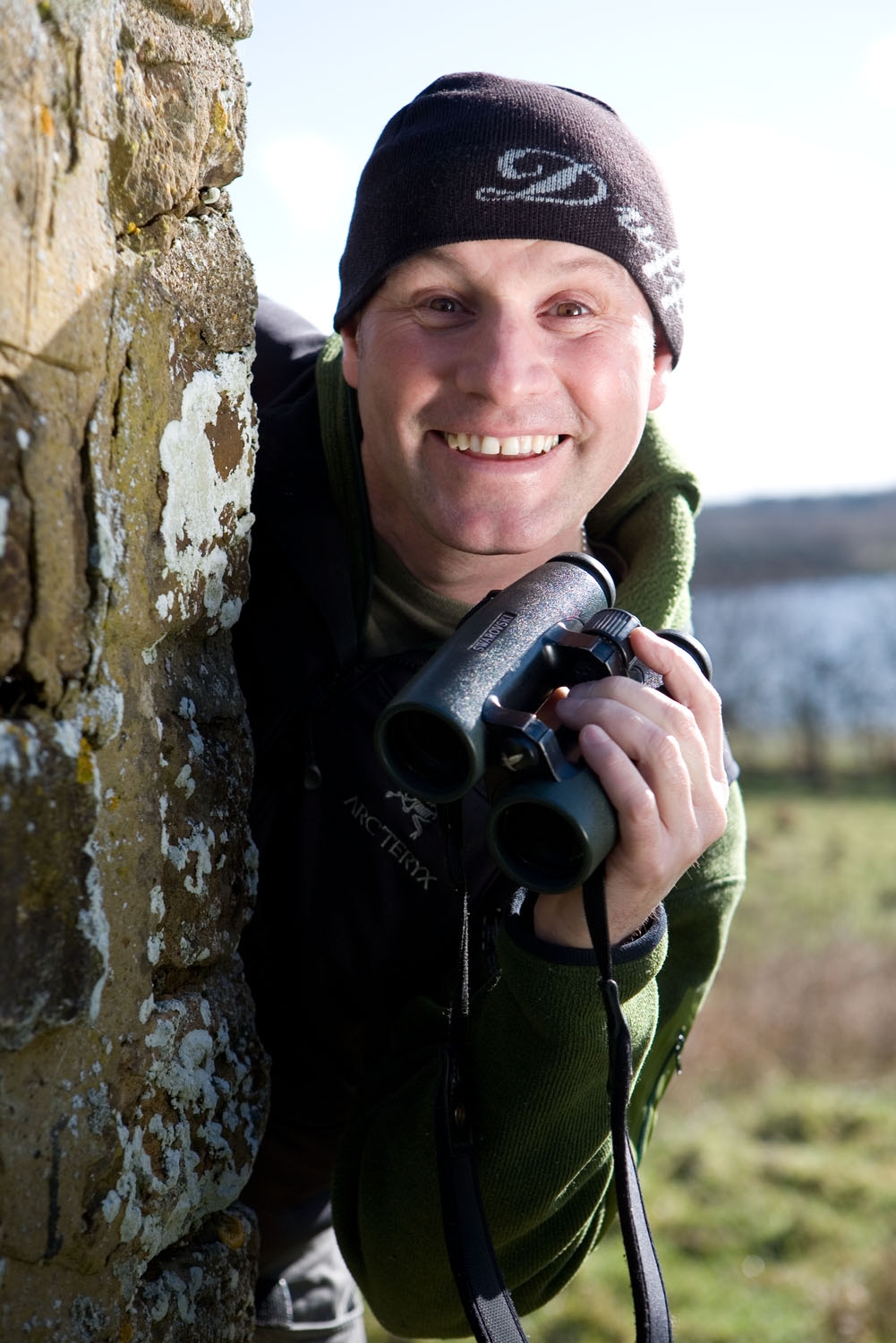If you're prepared to wrap up warm and head out with a pair of binoculars, there is a spectacle on offer in February and March that may just eclipse anything provided by the cavorting sequin-clad celebrities seen on Strictly Come Dancing.
Great crested grebes may look drab out of the breeding season, but they more than make up for their nondescript winter plumage with the extraordinary outfit ushered in by their second partial moult. Keen to impress their dance partner, the end result is a gorgeous headset, composed of a frill or ‘tippet’ of chestnut and black-tipped feathers that surrounds their white faces like a sundial – faces that are topped off with a set of black horn-like plumes.
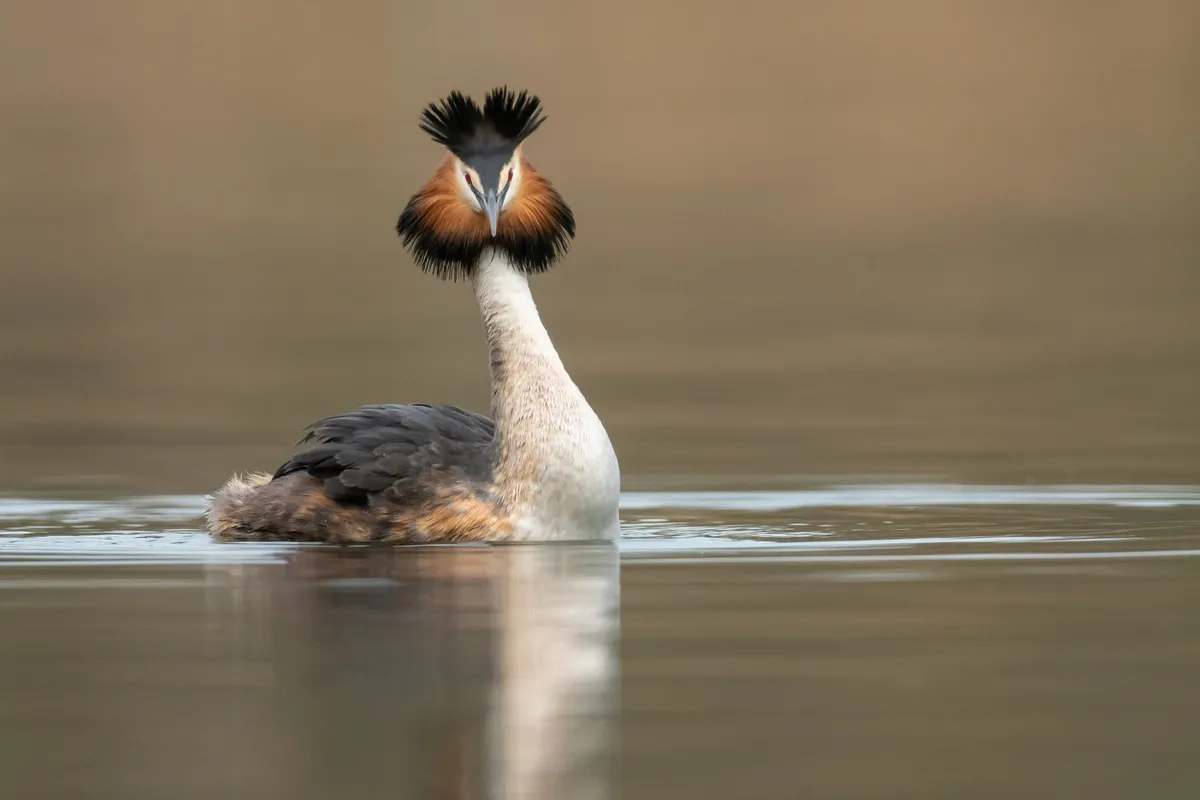
Why do great crested grebes dance?
Many grebes will already have paired up on wintering grounds. It’s only upon arrival at their chosen breeding lake or reservoir that the couple will truly begin testing the waters of their fledgling relationship. In addition to cementing their alliance, the other reason for their elaborate display is to carve out sufficient aquatic real estate to feed their family.
Early in the courtship process the grebes are frequently noisy, with their braying calls slicing through the cold, clear air. These utterances not only function as a means of keeping the pair in contact with one another but also reminding other grebes nearby that the territory has been claimed.
What does the great crested grebes’ courtship display look like?
Often the first – and also most common – display component to be observed is when the pair come together, often after having spent a while feeding apart. Facing each other with erect necks, the two birds will begin either alternately or synchronously shaking their heads and extravagant head plumes from side to side. This vigorous head-tossing frequently morphs into bob-preening, which entails the birds turning their heads around to flick their back feathers with their bills – almost the grebe equivalent of a curtsy.
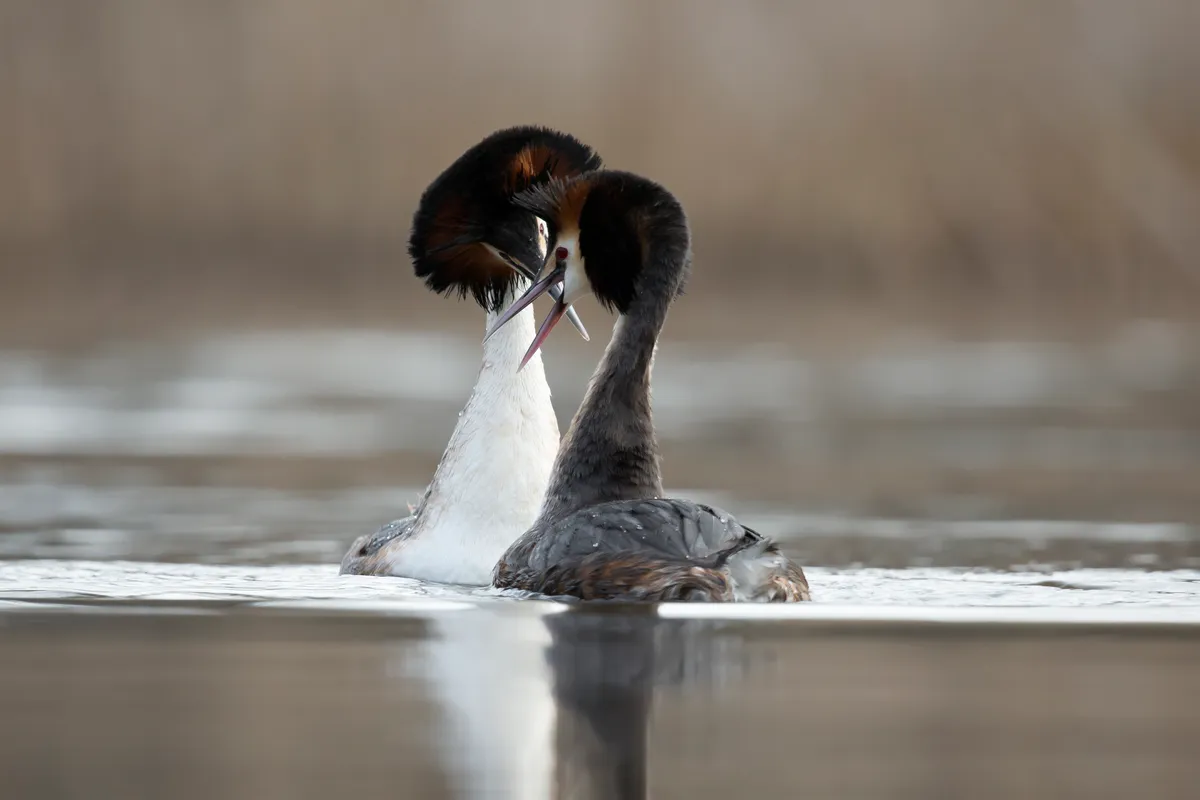
Keen to constantly test the strength of their relationship during this feeling-out process, a behaviour known as the ‘ghostly penguin display’ is triggered by one of the pair approaching the other from beneath the water.
Resurfacing within its partner’s personal space, the grebe will rear up out of the water, almost like a ghostly apparition, with its neck arched down. Here the response of the watching grebe is crucial, with the desired riposte being a highly ritualised ‘cat posture’, which involves the watching grebe half-opening its wings and ruffling its feathers in a gesture designed to appease and defuse any tension between the two birds.
What is the great crested grebes’ ‘weed ceremony’?
With bonds further strengthened, the pair may then move on to the pièce de résistance: the weed ceremony. Often commencing with a spot of head-shaking and bob-preening, the birds will part, only to then dive below water in search of a green prop.
Eventually resurfacing with some aquatic vegetation in their respective bills, they will then rush to a central meeting point with heads held low before grandly rising, breast to breast, using their webbed feet to tread water as they elegantly swish the vegetation from side to side.
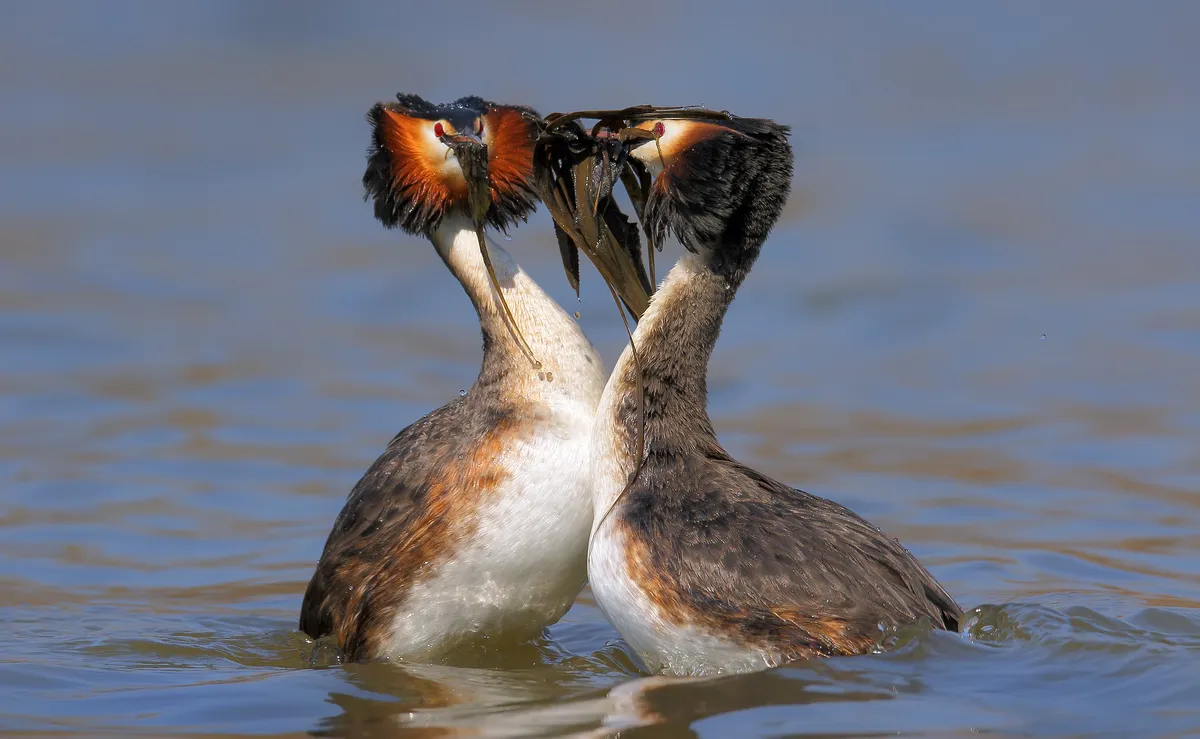
Unable to sustain this energy-sapping behaviour for too long, after a time the duo will settle back down onto the water, often winding up their dazzling display with a final bout of head-shaking. All that then remains is to wait for the judges’ 10s to come rolling in.
As grebes are conspicuous water birds, happy to perform in the open on cold, clear days, this should be one of the easier British spectacles to catch in early spring. With your front row seat guaranteed, the only other thing you will need to pack, apart from your binoculars, is that all important prerequisite to wildlife-watching: plenty of patience!
Discover more spring wildlife to look out for:
Best places to see courting great crested grebes:
RSPB Lochwinnoch
Only 30 minutes from Glasgow city centre, this reserve has easily accessed hides and viewing points from which to spot grebes.
Rutland Water, Rutland, England
Managed by Leicestershire and Rutland Wildlife Trust, this is the largest reservoir in England by surface area. Hides give great views across the water, making it one of England's best grebe-spotting sites.
WWT London Wetland Centre, London, England
Made from four disused Victorian reservoirs tucked into a loop of the River Thames, it may be the easiest place to see displaying grebes in Greater London.
Please note that external videos may contain ads:
Great crested grebes courtship dance | WWT
Tring Reservoirs, Hertfordshire, England
Composed of four reservoirs just north of Tring, this was the first place where the grebes’ courtship was described by evolutionary biologist (and eugenicist) Julian Huxley in 1914 and is a Hertfordshire and Middlesex Wildlife Trust reserve.
RSPB Valley Wetlands, Anglesey, Wales
On the Isle of Anglesey in North Wales, this reserve is home to a few pairs of grebes each spring, which don’t seem bothered by the jets flying over from RAF Valley.
Where do great crested grebes build their nests?
Either built among emergent vegetation or branches growing in the water, the grebe’s nest is often a floating heap of aquatic and marginal plants. As soon as the first egg is laid, the parents become far more retiring, and incubating birds will often cover the eggs with weeds before slipping off into the water if a predator is spotted.
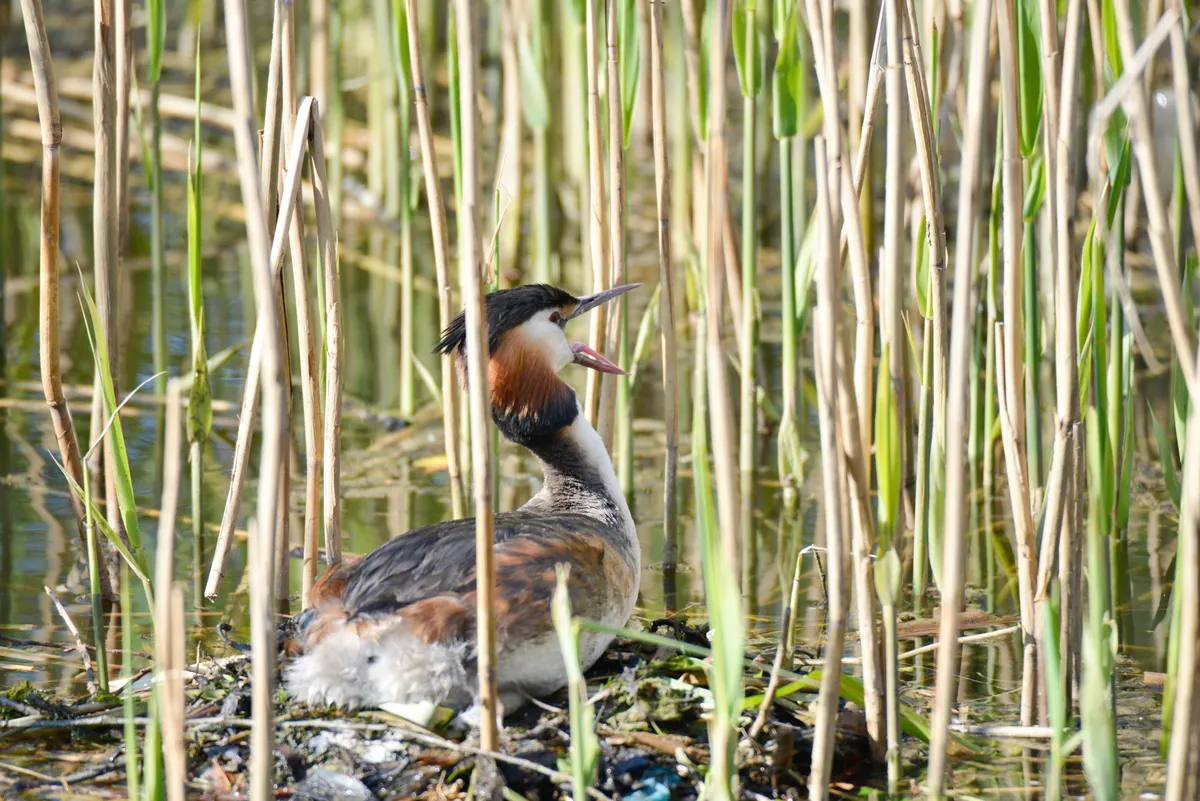
Soon after hatching, the chicks take to the water. Often piggybacking a ride in the early days, the brood tends to be split between the parents, with the two groups living largely independently until the young can feed themselves after about eight weeks.
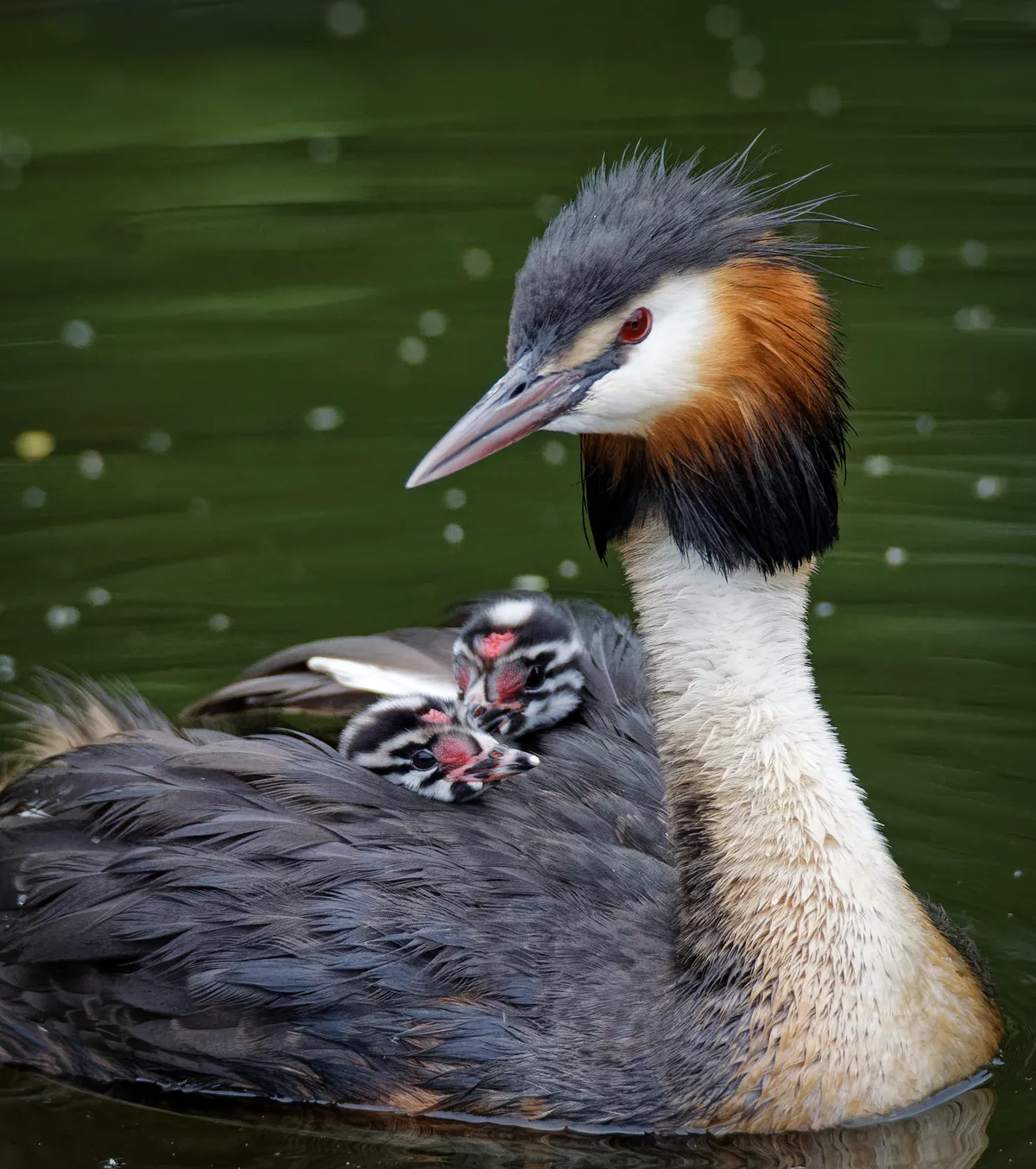
Other species to see
It’s also worth looking out for a couple of handsome diving ducks that breed on our larger lakes and lochs. The male ‘tufties’ (tufted ducks) can easily be picked out by their vibrant black-and-white plumes, while the drake pochard’s chestnut head, black breast and red eye can be picked out from quite a distance.
Main image: A pair of great crested grebes in a courtship display. © Adrian Coleman/Getty
